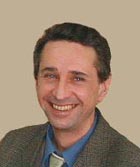Contents: 2024 | 2023 | 2022 | 2021 | 2020 | 2019 | 2018 | 2017 | 2016 | 2015 | 2014 | 2013 | 2012 | 2011 | 2010 | 2009 | 2008 | 2007 | 2006 | 2005 | 2004 | 2003 | 2002 | 2001
2007, 4
Internal loss factors of ship structures and its application for computing vibration and noise
language: English
received 05.12.2006, published 25.01.2007
Download article (PDF, 370 kb, ZIP), use browser command "Save Target As..."
To read this document you need Adobe Acrobat © Reader software, which is simple to use and available at no cost. Use version 4.0 or higher. You can download software from Adobe site (http://www.adobe.com/).
ABSTRACT
Results of internal loss factors (ILF) measurements for different ship structures are presented. It is found that dispersion of ILF is quite large. Origin of dispersion is mainly random. Statistical properties of ILF as random value are evaluated on the basis of measurement results. Computational example for vibration propagation on ship-like structure is presented. At that Statistical Energy Analysis (SEA) and probabilistic approach are used. ILF, which are generated on the basis of statistical properties, are used as input data. Calculated results show possible dispersion of vibration of distant ship structures up to 7-10 dB. Appropriateness of probabilistic approach and approximate techniques for computing of vibration and noise on ships are justified.
Keywords: noise, vibration, ship acoustics, Statistical Energy Analysis, SEA, internal loss factor, ILF, damping loss factor, probabilistic approach
10 pages, 8 figures
Сitation: I. Grushetsky. Internal loss factors of ship structures and its application for computing vibration and noise. Electronic Journal “Technical Acoustics”, http://www.ejta.org, 2007, 4.
REFERENCES
1. Computing of noise levels in ship compartments. Technique. (in Russian). ОСТ 5.0173-75, 1975.
2. «Designer Noise» (software for prediction noise levels on surface ship). Noise Control Engineering, Inc., USA.
3. Gutin L. Ya. Selected works. Leningrad, «Sudostroenie», 1977.
4. Nikiforov A. S., Budrin S.V. Propagation and absorption of vibration on ships. (in Russian). Leningrad, «Sudostroenie», 1968.
5. Boroditsky L. S., Spiridonov V. M. Structure borne noise control in ship compartments. (in Russian). Leningrad, «Sudostroenie», 1974.
6. Lyapunov V. T., Nikiforov A. S. Vibration insulation in ship structures (in Russian). Leningrad, «Sudostroenie», 1975.
7. Popkov V. I. Vibration diagnostics and decreasing of ship machinery. (in Russian). Leningrad, «Sudostroenie», 1974.
8. L. Cremer, M. Heckl, E. E. Ungar. Structure-Borne Sound, 2nd edition, Springer, Berlin, 1988.
9. I. Grushetsky, A. Smol’nikov. FEM application for calculation of coupling loss factors used in SEA, L-shaped beams case. Electronic Journal «Technical Acoustics», http://www.ejta.org, 2004, 6.
10. I. Grushetsky, A. Smol’nikov. Determination of coupling loss factors for two beams using FEM. Electronic Journal «Technical Acoustics», http://www.ejta.org, 2005, 24.
11. C. Simmons. Structure-borne sound transmission through plate junctions and estimates of SEA coupling loss factors using the finite element method. JSV. 1991, V. 144, pp. 215–227.
12. C. Hopkins. Statistical energy analysis of coupled plate systems with low modal density and low modal overlap. JSV. 2002, V. 251, No 2, pp. 193–214.
13. Richard G. De Jong. Statistical Energy Analysis of Ship Structure-borne Sound. Inter-Noise 2003, Seogwipo, Korea, August 25–28, 2003, paper № 121.
14. M. Heckl. Measurement of absorption coefficients on plates. JASA, 1962, 34(6), 803–808.
15. Brandon C. Bloss, Mohan D. Rao. Estimation of frequency-averaged loss factors by the power injection and the impulse response decay methods. J. Acoust. Soc. Am. 117 (1), January 2005.
16. I. I. Bogolepov. Noise control in industry. (in Russian). Leningrad, «Sudostroenie», 1986.
17. I. Grushetsky, A. Smol’nikov. Computing of coupling loss factors using FEM, probabilistic approach. Electronic Journal «Technical Acoustics», http://www.ejta.org, 2006, 10.
 |
Igor Grushetsky, PhD, Krylov Shipbuilding Research Institute (St. Petersburg, Russia). Scientific area - noise and vibration computing, measurements and control e-mail: editor(at)ejta.org |
